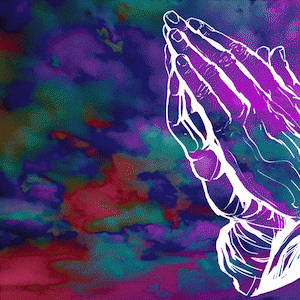Throughout the Andes, stretching skyward from dry tropical rainforests, is an inconspicuous tree that can turn your mind euphoric. While the bark of the Anadenanthera colubrina, or vilca, can be used to make tea and its leaves are used for dye, it’s the thin, disc-like seeds within its flattened 13-inch-long pods that have captured people’s attention for 4,000 years. They’re filled with high levels of bufotenine, a potent hallucinogen similar to LSD.
To trip on vilca, modern and ancient people have smoked it or used it as an enema because you can’t just eat the seeds to get high. Enzymes in the gut neutralize the psychedelic effects of vilca when it’s ingested. But a new study published Wednesday in the journal Antiquity reveals that the Wari civilization that ruled the Peruvian Andes between 600 and 1,000 A.D. were perhaps the first to find a way to side-step this snag. The answer? They mixed their drugs with their beer, of course.
More specifically, the Wari mixed vilca seeds with chicha, a beer-like beverage brewed from a plant called Schinus molle, (or molle del Peru, better known in the U.S. as the Peruvian peppertree). A type of chemical produced during fermentation called beta-carbolines can suppress the action of the gut enzymes. If you drink molle chicha mixed with vilca, you can still feel vilca’s psychotropic effects—maybe a bit weaker than vilca that’s smoked or used as an enema, but longer lasting.
ADVERTISEMENT
“This is yet another example of how drugs were used in the past, which can help us reflect on what shaped the role of drugs in our own society and how that is shifting a bit,” said Matthew Biwer, a paleoethnobotanist at Dickinson College and the lead author of the new study.

A vilca seed capable of producing hallucinogenic effects, excavated from Quilcampa, Peru.
Matthew Biwer/Royal Ontario MuseumResearchers previously suspected some partying was going on when they’d found images of vilca seed pods on ancient Wari jars that were used for serving chicha. We have proof now thanks to new evidence excavated at Quilcampa, Peru, a dry and arid site where archeologists found heaps of molle drupes and vilca seeds. The pairing of these items suggests the Wari held a drug- and booze-fueled rager of a feast just before they abandoned Quilcampa in the mid-ninth century.
A total of 1,400,361 molle stems were found at the site, along with a ton of deformed drupes (a sign they were soaked and turned into booze). The lack of paraphernalia, the recovery of vilca seeds from Wari residential compounds, the proximity of pits full of molle drupes, and the known imagery of vilca seeds on molle chicha jugs all provide “convincing evidence for the creation of vilca-infused molle beer that was then consumed on the occasion of the site’s final abandonment,” the authors wrote.
What we still don’t know is how the Wari figured this trick out, said Biwer. “It’s one of those things where it’s like, how does anything happen? How do people figure out how to do this?”

The location of Quilcampa, Peru.
Courtesy Antiquity Journal.What is clear is that the Wari used vilca in a new way and with a fresh purpose. This is the earliest evidence of people mixing hallucinogens with alcohol in this region.
It's also distinct from how mind-altering substances were shared before and after this empire’s reign. Before the Wari, other Andean societies made hallucinogens privy to a limited number of elites. Wari leadership also kept privileged ownership of vilca. But this new evidence suggests they hosted feasts where they doled out the hallucinogen to gatherings as large as 40 to 50 people. The Inca, who came later, would continue this communal trend—scaling it up to the mass consumption of maize beer as a tool for bringing people together.
Biwar and his team think this unusually communal drug party at Quilcampa was an effort to enforce social power and foster social cohesion—a situation where leaders reinforced their heightened status by sharing their drugs at these psychotropic feasts.
That’s not too surprising: There are plenty of modern studies that show how well psychedelics can bring people together thanks to their mood-enhancing effects. These qualities are a big reason why psychedelics are now being aggressively explored as a mental health therapeutic.
Biwer thinks this shift in drug use could be a big reason why the Wari empire lasted for 400 years. “I think it must have been a very effective strategy for building alliances and promoting social cohesion,” he said. “It serves as a mechanism for bringing people together. And as a host of feasts you incur debts from the guests who owe you for providing the experience. It must have been effective until it wasn’t—until the Wari empire collapsed.”
New York University medical anthropologist Olivia Marcus, who studies the modern implications of ayahuasca shamanism in the upper Peruvian Amazon and was not involved with the new study, pointed out that while the Wari may have been the first Andean civilization first to mix alcohol and vilca, they’re far from the first early peoples to indulge in drugs. Some of the first cultivated plant species were psychoactive substances—a fact that paints a “picture of the priorities of ancient humans,” she said.
“Human use of psychoactive drugs has certainly played an important role in spiritual, ritual, and political phenomena, which is obvious when we think about the widespread ancient use of non-edible cultigens like tobacco,” Marcus told The Daily Beast.

A Wari Empire drinking vessel.
Lisa Milosavljevic, Royan Ontario MuseumWhile there are societies that don’t show evidence for ritual psychoactive drug use, Marcus thinks it’s fair to say these drugs have potential as tools for social cohesion. We currently see this in contemporary contexts ranging from European-style psilocybin retreats, to the use of ayahuasca by South American Indigenous like the Siona as a part of their struggle against exploitation.
Wanting to feel connected to a group or explore altered states of consciousness are behaviors found in all human cultures. “The strategies to achieve this are endlessly dynamic,” said Marcus. The Wari had similar aims as those who came before and after them, and they pioneered a novel way to get there: making a popular cocktail that can make you feel like you’re interacting with spirits.
But despite the success of the Wari, we can’t necessarily say all psychoactive drugs have a universal ability to bring people together. The influence of these drugs on social cohesion depends on how groups attribute meaning to the experience, said Daniel Lende, an anthropologist at the University of South Florida who was not part of the study. A single beer isn’t super meaningful, Lende points out, but it becomes so in the context of friends getting together at a party.
“Psychoactive drugs make us feel something different, and that can become a tool for individuals and groups to shape what people experience,” Lende told The Daily Beast.
We also can’t really say the modern ideas of how psychedelics can help us is simply an extension of how humans used those drugs thousands of years ago, clinical psychologist Kevin St. Arnaud told The Daily Beast.
If you live in the contemporary West, you were likely taught psychoactive drugs are “at worst, inherently problematic or dangerous, and at best, a temporary hedonic escape,” said St. Arnaud. This is not how it was for the Wari, and it’s not how it is for a number of other societies.

The Quilcampa archeological site.
Lisa Milosavljevic/Royal Ontario MuseumThat's something to consider during the present push to decriminalize psychoactive substances like psilocybin and gain FDA approval for prescription psychedelics. The social effects, and subsequent therapeutic benefits, associated with hallucinogenic drugs depends a great deal on exactly how the drug is used, with whom, and for what purpose.
St. Arnaud does think today’s society is missing out on an opportunity to learn how to use psychoactive drugs to enhance “personal, social, and spiritual well-being.” But just taking a psychedelic won’t foster social cohesion, he explained. A shift in culture and perspective is necessary.
“Psychoactive drugs can be thought of as tools,” St. Arnaud said. “Just as a surgeon can use a knife to excise a tumor, so too can an individual with malicious intent use a knife to maim.” As society considers how to regulate usage, “we need to think about drugs in a similar way”—whether we’re using these tools to heal or simply to party.
While Biwer and his team have some strong ideas on how the Wari were using these drugs as a social tool, we may never know the exact details. It’s possible they were just looking to have a fun night out.
“We have to accept that ancient humans had a lot of fun and were clearly interested in exploring the depths of the psyche or what is considered other realities,” Marcus said.
That may mean downing a drink with a drop of hallucinogenic tree.







